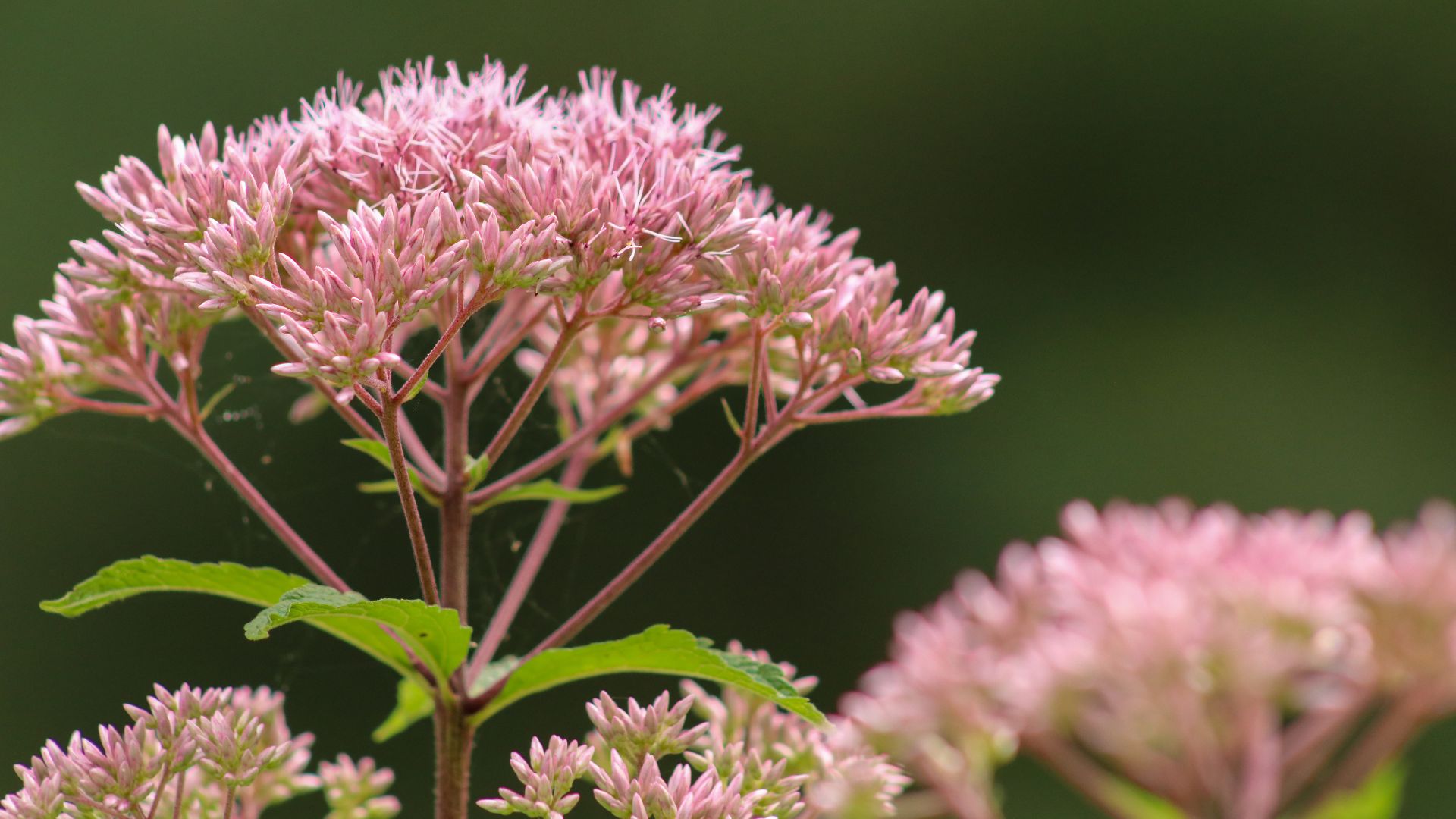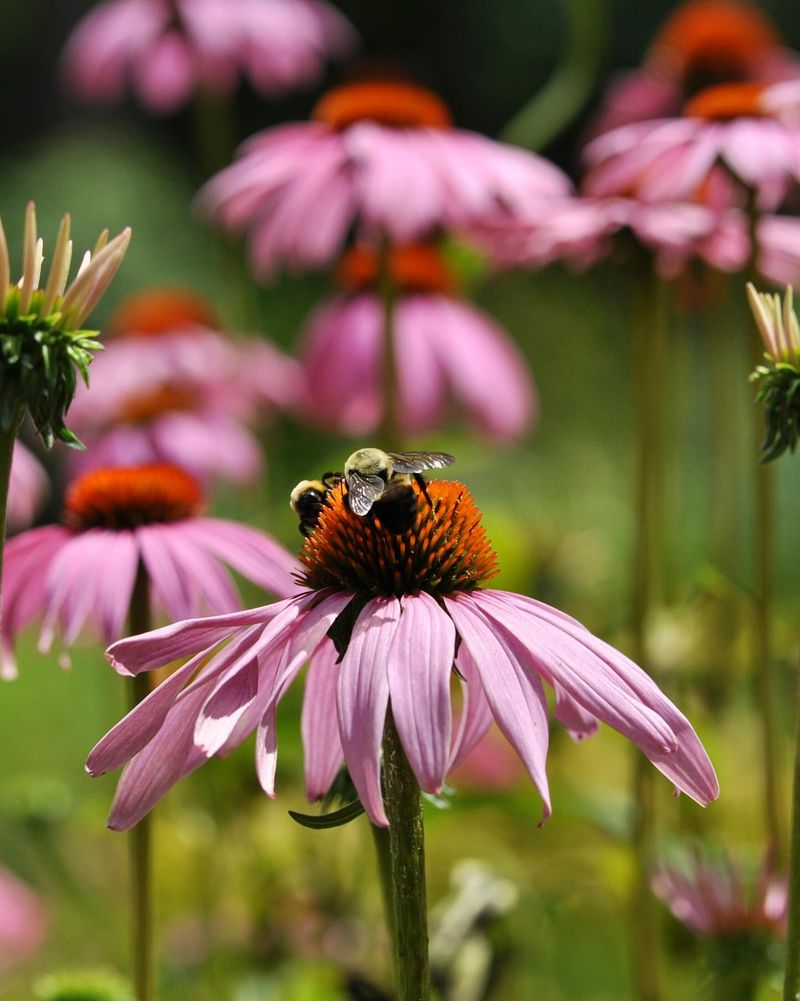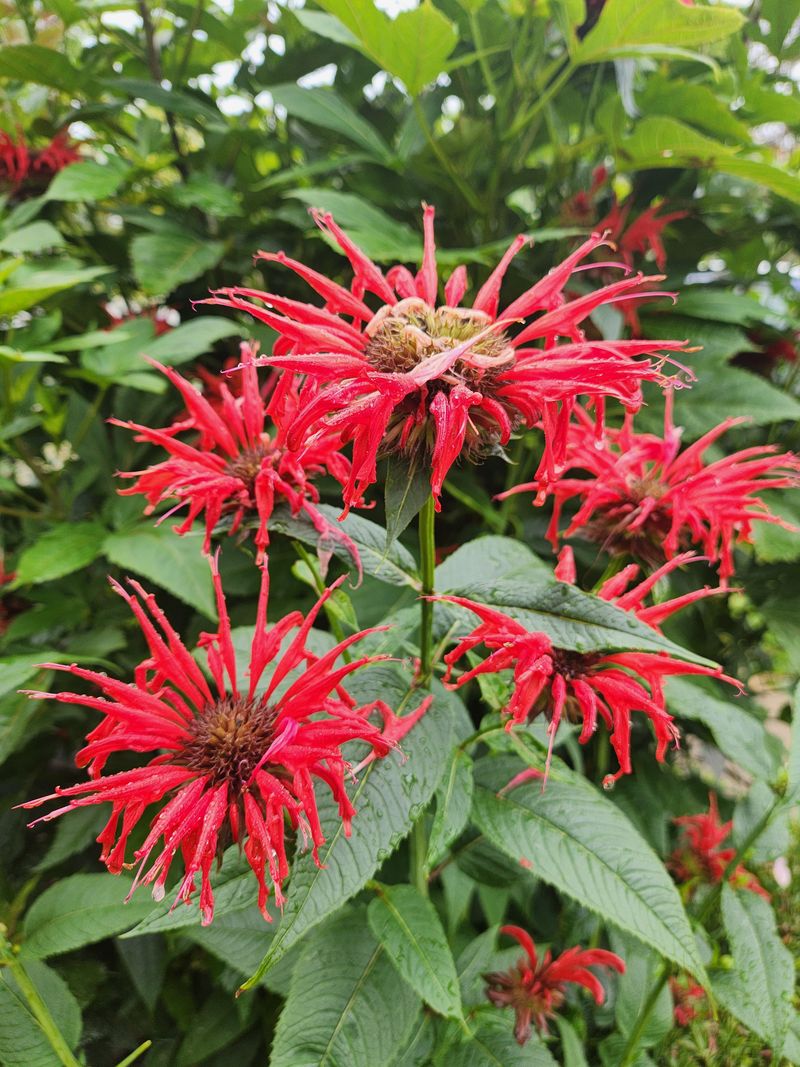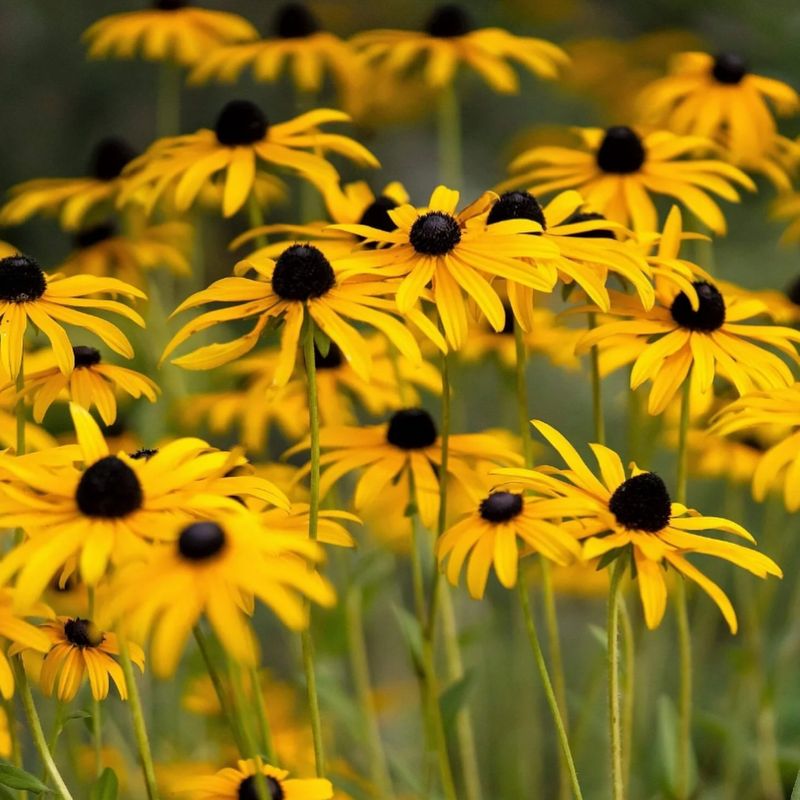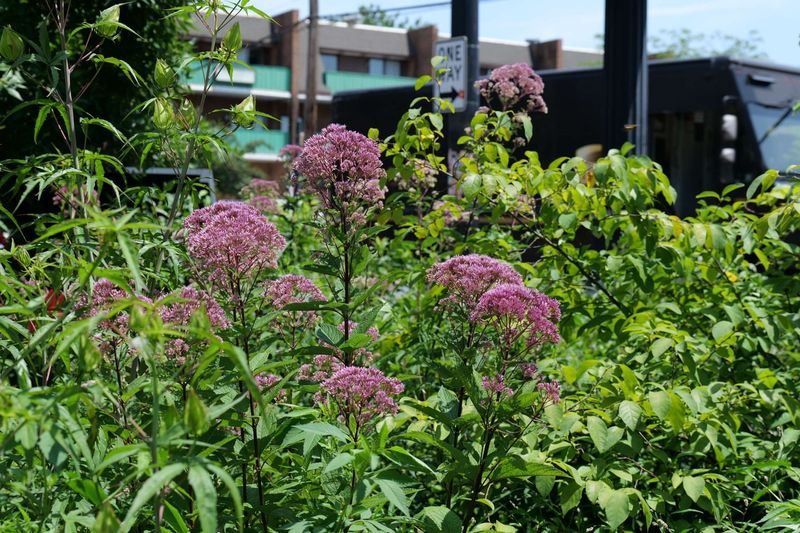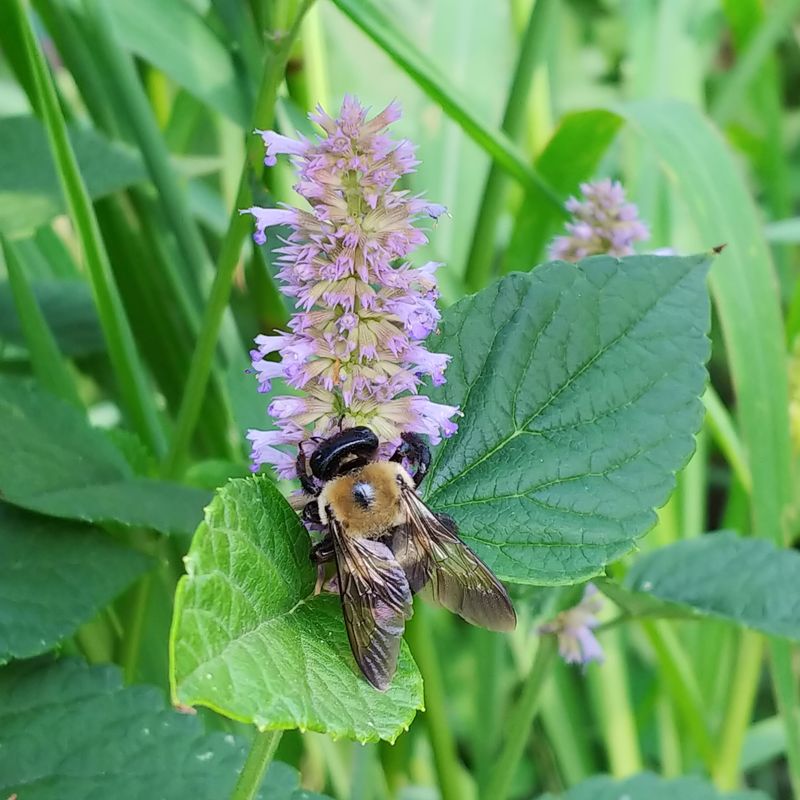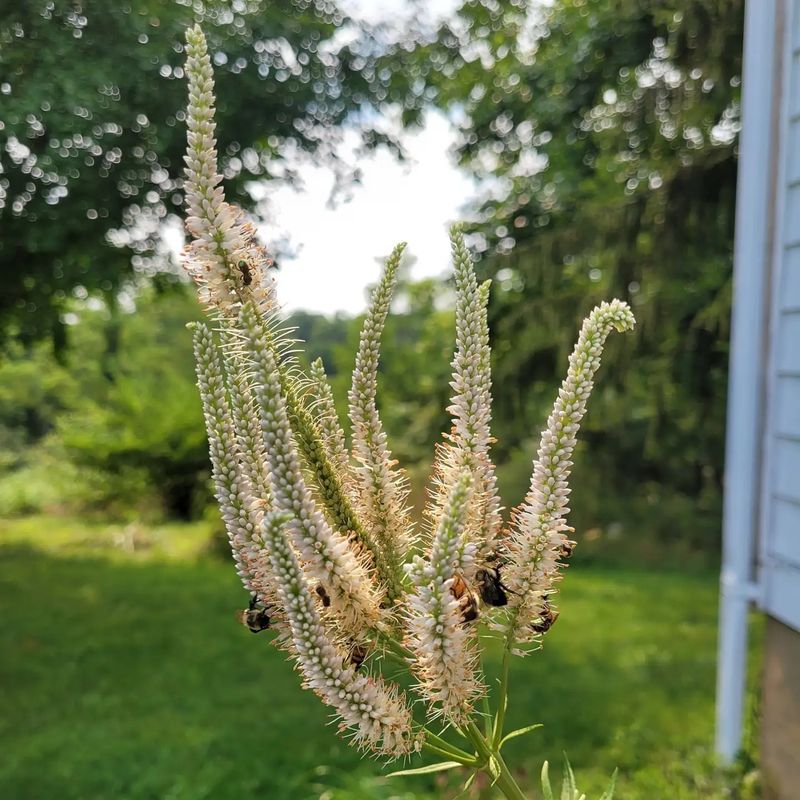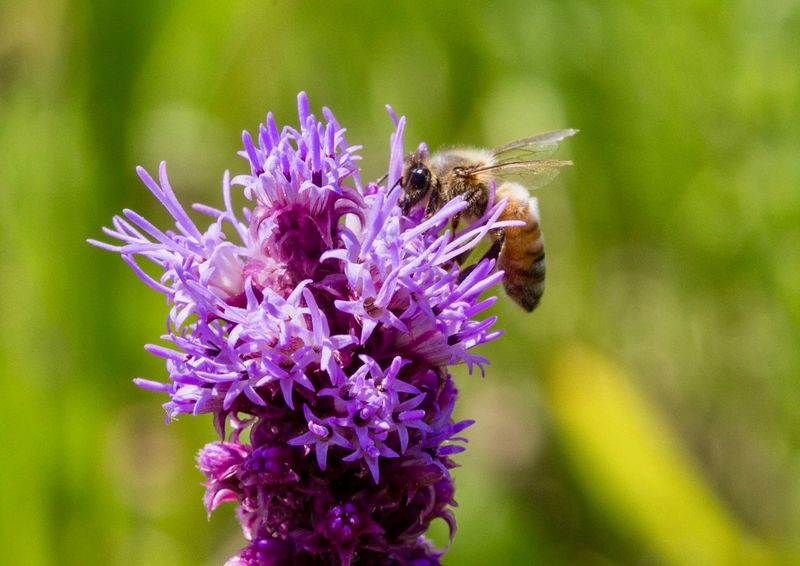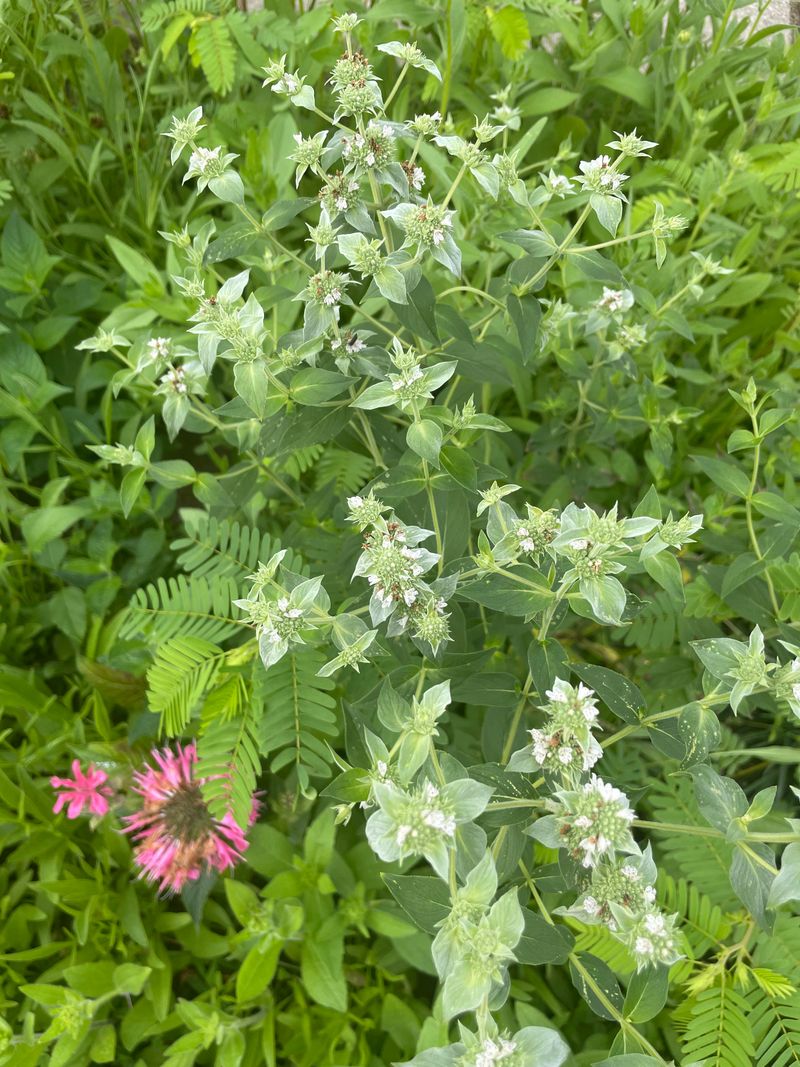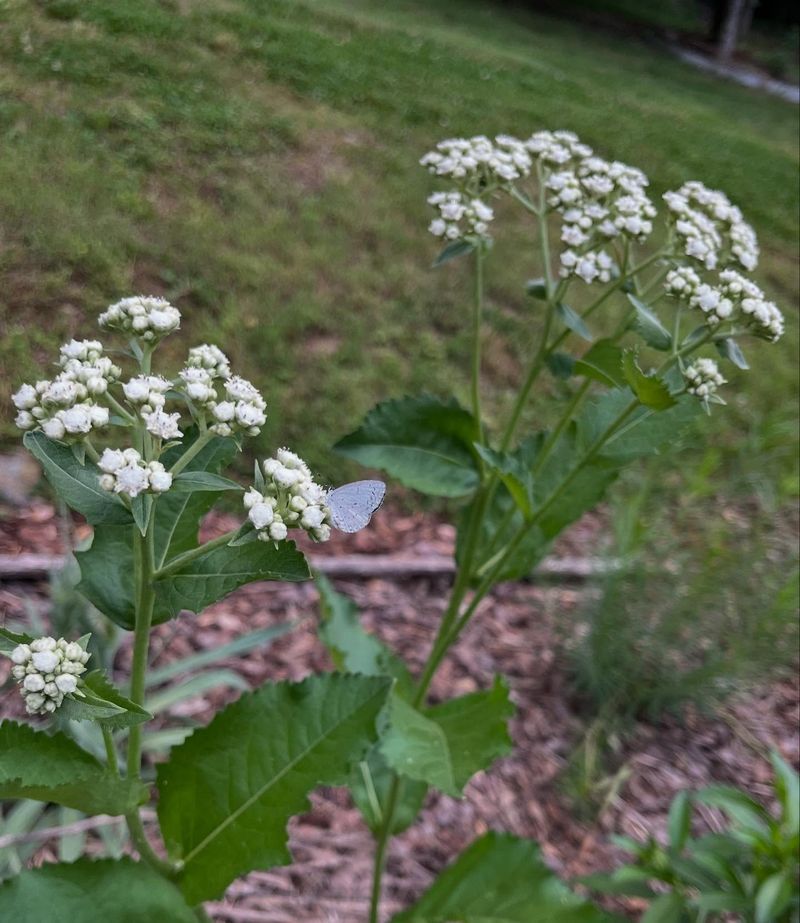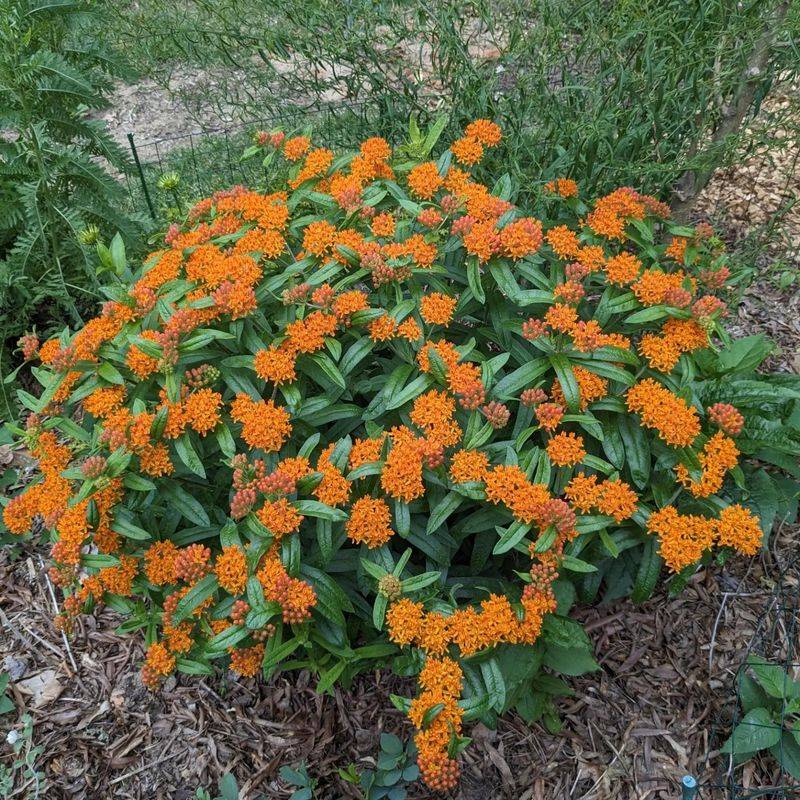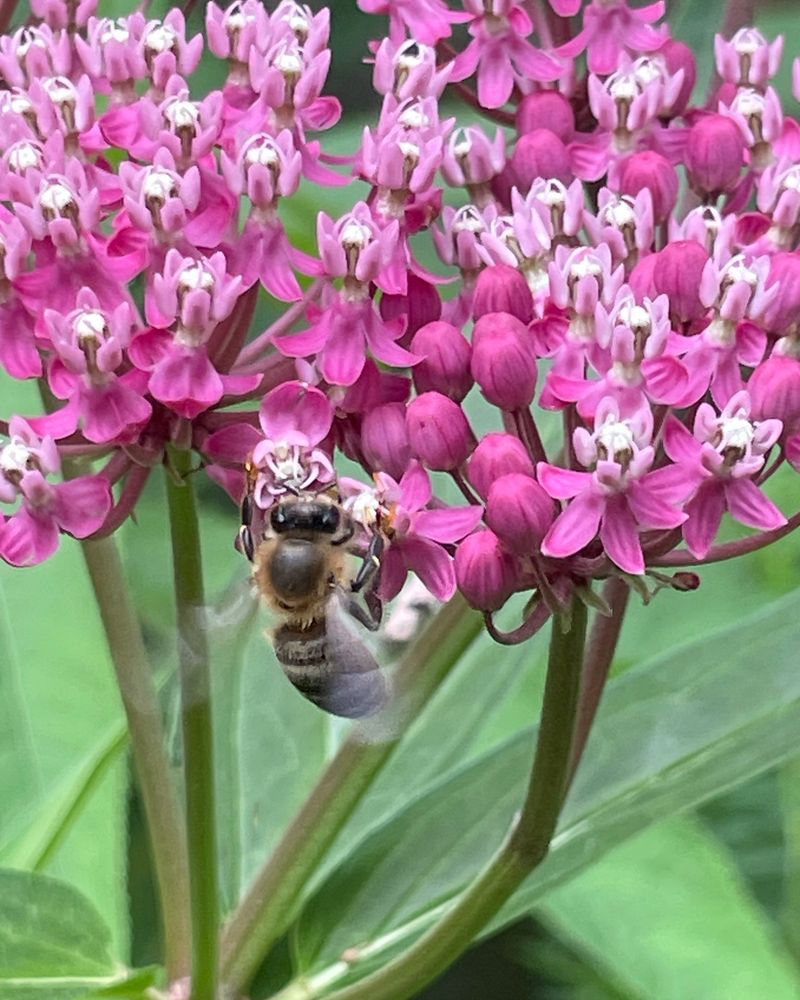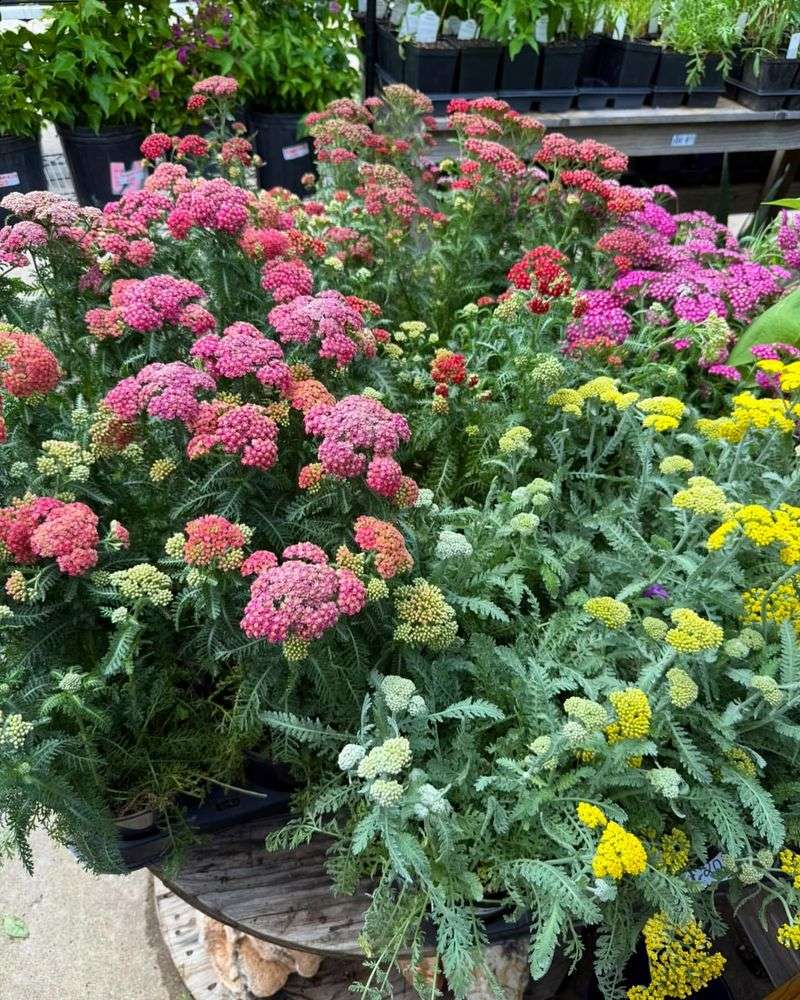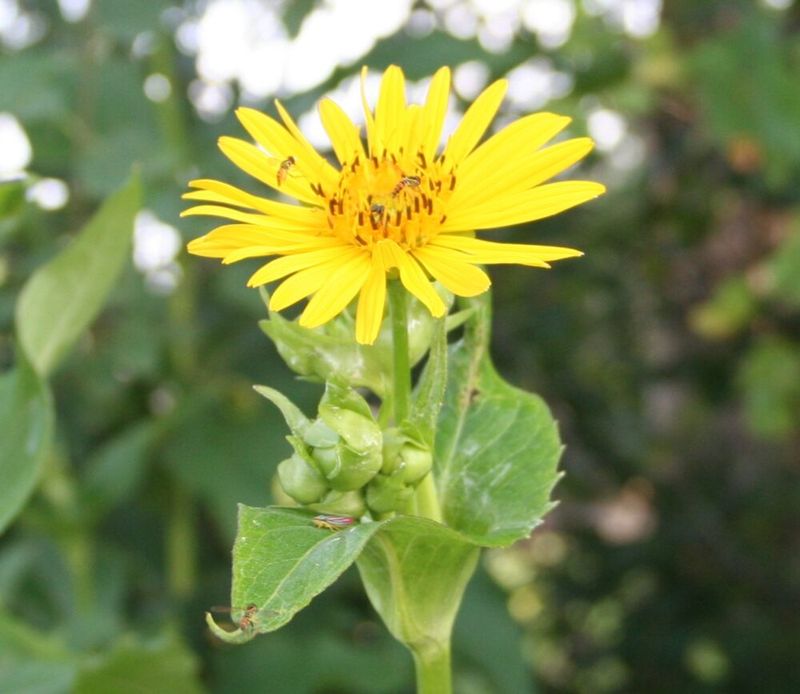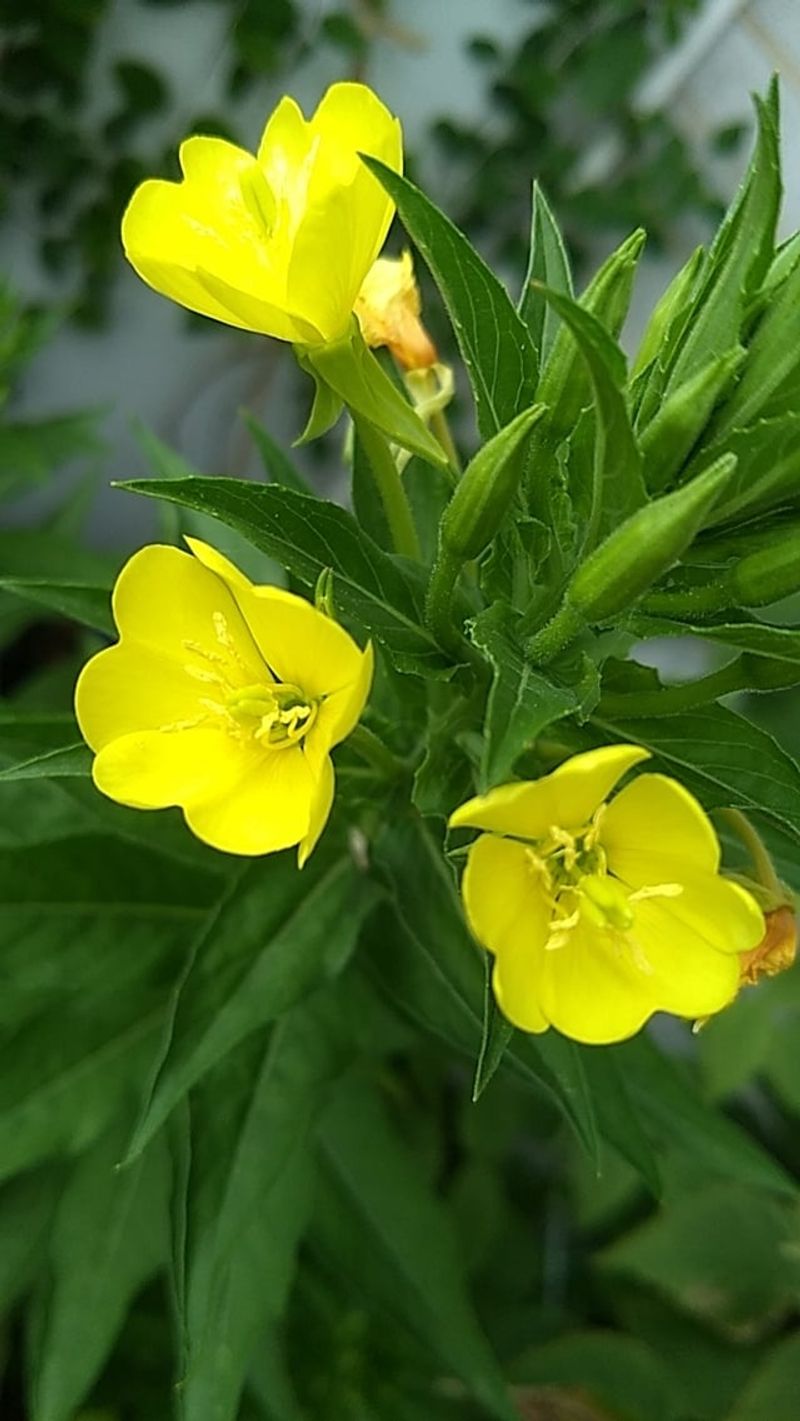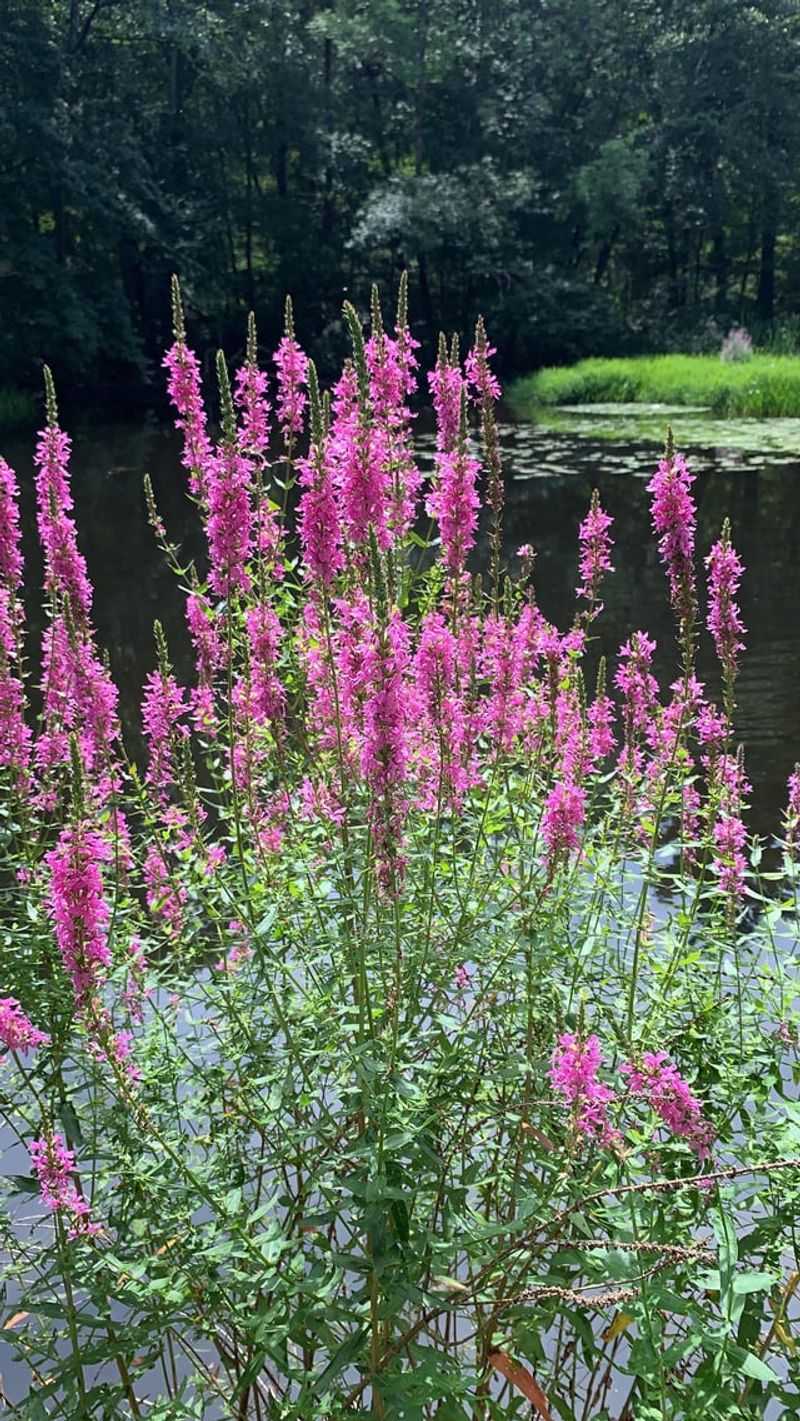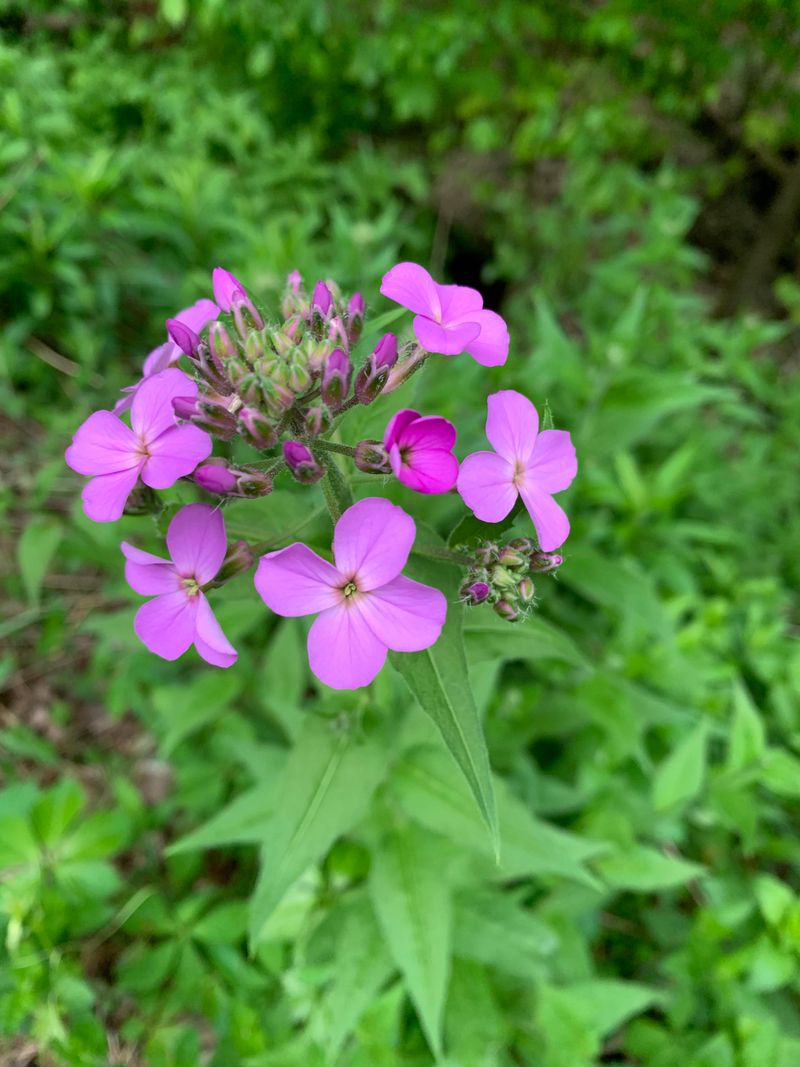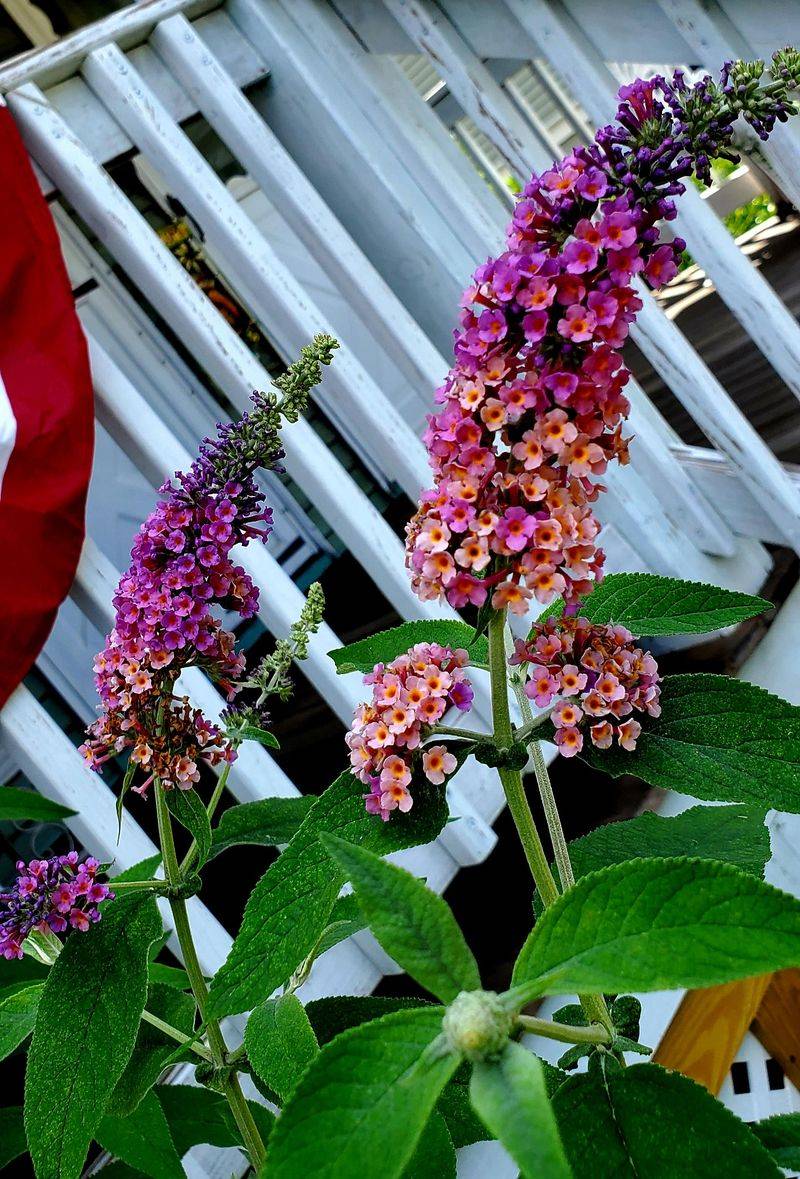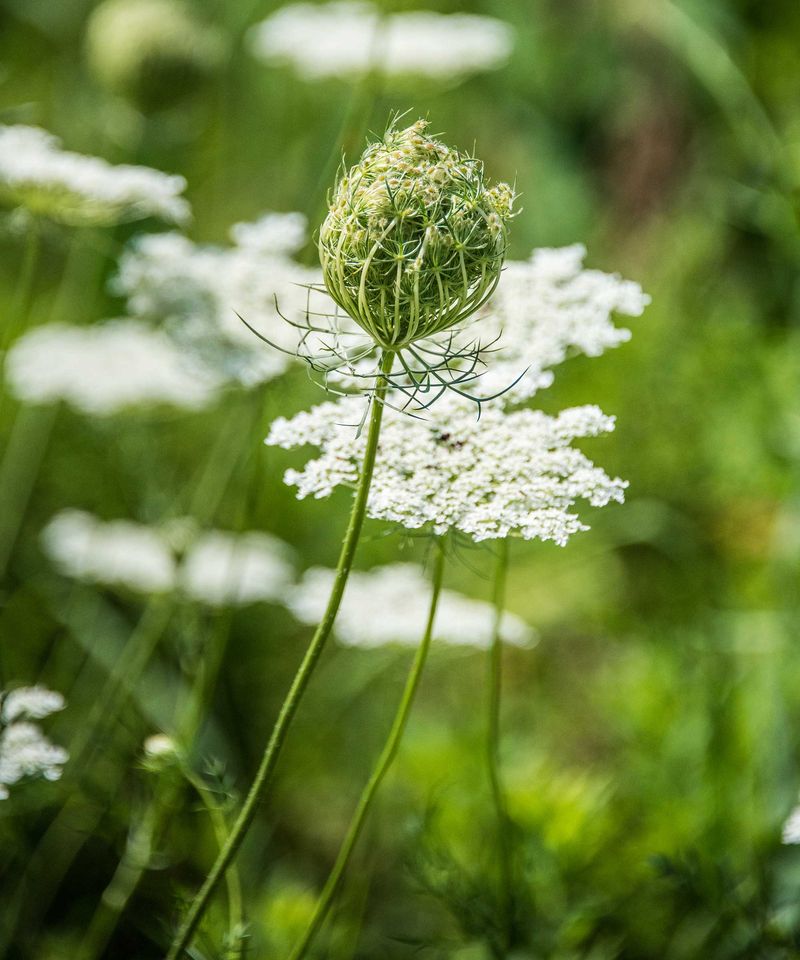Bees are working overtime in July, and your garden can be the perfect pit stop they’re hoping to find. When native wildflowers bloom at just the right time, they offer essential nectar and pollen when natural sources start running low.
Plants like purple coneflower, wild bergamot, and butterfly milkweed are mid-summer stars worth inviting in. They’re tough, gorgeous, and deeply appreciated by hungry pollinators. Native blooms also tend to thrive with minimal fuss—just plant and watch the magic unfold.
On the flip side, steer clear of invasive spreaders like purple loosestrife or yellow star-thistle. They may look lovely, but they crowd out native plants and offer little for bees. Keeping your garden balanced helps both pollinators and your local ecosystem flourish.
1. Purple Coneflower
Bees can’t resist the large central cone of this native perennial. I’ve counted up to seven different bee species visiting my coneflower patch in a single afternoon!
The sturdy stems stand tall through summer storms, and the plants are remarkably drought-tolerant once established. No need for pampering here.
For maximum pollinator appeal, plant them in clusters rather than as single specimens. They’ll spread gradually over the years, creating natural drifts that look like a prairie meadow.
2. Bee Balm
The name says it all! Those shaggy, crown-like flowers produce nectar that draws bees from surprising distances. My patch started as three small plants and now forms an impressive summer display.
Plant bee balm in spots with good air circulation to prevent powdery mildew. Morning sun with afternoon shade works well in hotter regions.
Hummingbirds and butterflies join the bee visitors, making this plant a true wildlife magnet. Deadhead spent blooms to extend the flowering period well into August.
3. Black-Eyed Susan
These sunny yellow flowers reliably appear in my garden when July heat arrives. Native bees especially love the central dark cone where they can gather protein-rich pollen.
Black-eyed Susans handle poor soil conditions like champions. They’ll bloom even in clay or rocky areas where fussier plants struggle.
I’ve found that leaving the seed heads in place after flowering provides food for goldfinches while allowing the plants to self-seed naturally. They’re short-lived perennials but replace themselves through generous self-seeding.
4. Joe-Pye Weed
Despite its unfortunate name, this towering native plant creates a pollinator paradise. The massive flower clusters become covered with bees, butterflies, and beneficial wasps during peak bloom.
Joe-Pye weed reaches impressive heights of 5-7 feet, making it perfect for the back of borders. The mauve flower heads create a dreamy effect in late afternoon light.
I’ve found it grows best with consistent moisture, though established plants can handle short dry spells. The hollow stems provide nesting sites for native bees if left standing through winter.
5. Anise Hyssop
Small native bees go crazy for these purple spikes! The licorice-scented leaves add sensory appeal while the long-lasting blooms provide weeks of nectar.
Heat and drought don’t bother established plants. Mine thrive in the hottest part of my garden where other flowers struggle to survive the July sun.
For maximum pollinator benefit, avoid deadheading until fall. The seedheads feed goldfinches while late-season bees can still access nectar from any remaining flowers. New plants often appear where birds drop seeds.
6. Culver’s Root
Slender white flower spikes create an architectural element while supporting specialized native bees. The candelabra-like blooms stand out against darker foliage plants.
Culver’s root prefers consistent moisture but established plants handle average garden conditions well. The deep root system helps it survive occasional drought.
I’ve grown this underappreciated native for years and love how it attracts tiny beneficial wasps that help control garden pests. The unusual branching flower structure adds visual interest even from a distance.
7. Meadow Blazingstar
Bumblebees practically fight over these magenta flower spikes! Unlike many flowers that bloom from the bottom up, blazingstar’s unusual top-down flowering pattern extends the nectar season.
The vertical growth habit takes up minimal ground space while providing maximum nectar. Plant them in groups of 5-7 bulbs for the most natural effect.
My garden has sandy soil, and blazingstar thrives in these conditions. The drought-tolerant nature makes it perfect for water-wise gardens. Even during last summer’s heat wave, these kept blooming while other plants wilted.
8. Mountain Mint
Small clusters of white flowers topped with silvery bracts create a frosted appearance that’s uniquely beautiful. I’ve counted more different insect species on mountain mint than any other plant in my garden!
Despite its name, it’s not invasive like true mints. The aromatic foliage deters many garden pests while attracting beneficial insects.
Mountain mint handles part shade better than many pollinator plants. Mine grows along a woodland edge where it receives only 4-5 hours of direct sun but still flowers profusely and attracts countless bees.
9. Wild Quinine
Flat-topped white flower clusters provide landing pads for small native bees and beneficial flies. The unusual texture contrasts beautifully with more common garden flowers.
Wild quinine’s deep taproot makes it incredibly drought-resistant once established. The sturdy stems never need staking, even in windy locations or after heavy rain.
In my garden, it’s become a reliable performer year after year with almost no maintenance. The dried seedheads add winter interest and provide food for birds when snow covers the ground.
10. Butterfly Weed
The bright orange flower clusters aren’t just for butterflies—native bees depend on them too! As a milkweed species, it also supports monarch butterfly reproduction.
Unlike common milkweed, butterfly weed stays well-behaved in garden settings. The deep taproot makes transplanting challenging, so choose its location carefully.
I’ve found that the key to success is patience—plants often take a year to establish before putting on their best show. The effort pays off when the flowers become a buzzing hub of pollinator activity in July.
11. Swamp Milkweed
Pink flower clusters emit a vanilla-like fragrance that attracts long-tongued bees and butterflies. The elegant upright form fits well in both formal and naturalistic garden designs.
Despite its name, swamp milkweed adapts to average garden soils. It appreciates consistent moisture but doesn’t require boggy conditions to thrive.
The seed pods that form after flowering create interesting architectural elements. I leave them in place until they start to split, then collect some seeds to share with friends while letting others disperse naturally.
12. Yarrow
Flat-topped flower clusters in white, yellow, or soft pink attract tiny beneficial wasps and native bees. The ferny foliage adds textural interest even when the plant isn’t flowering.
Few plants match yarrow’s toughness in poor, dry soils. It laughs at drought and keeps blooming when other flowers have given up.
I’ve used native yarrow varieties to stabilize a steep, dry bank where little else would grow. The plants spread slowly to form a weed-suppressing mat while providing months of pollinator support.
13. Cup Plant
Sunny yellow daisy-like flowers top impressive 8-foot stems, creating a dramatic backdrop for smaller garden plants. The unique leaves form cups that hold rainwater for thirsty bees.
Cup plant’s massive size isn’t for small gardens, but in larger spaces, it creates a stunning architectural element. The deep root system helps improve soil structure.
Birds visit my cup plants in fall to feast on the nutritious seeds. Goldfinches perform impressive acrobatics to reach the ripening seed heads, adding wildlife interest well beyond the flowering season.
14. Evening Primrose
Large yellow flowers open dramatically at dusk, attracting specialized evening pollinators like hawk moths along with early-rising bees the next morning. The blooming process itself is fascinating to watch.
Native evening primrose species adapt to challenging conditions including poor soil and drought. They’re perfect for those difficult dry spots where little else grows.
I’ve grown evening primrose along my driveway where it bakes in reflected heat all summer yet continues to produce cheerful blooms. Its ability to thrive with minimal care makes it ideal for busy gardeners.
15. Purple Loosestrife
Though admittedly pretty with tall purple flower spikes, this European invader overwhelms wetland ecosystems. It forms dense monocultures that crowd out dozens of beneficial native species.
Each plant produces up to 2.7 million seeds annually, helping explain its aggressive spread. Even small garden plantings can escape into nearby natural areas through water, wind, or wildlife.
I once spotted a small patch growing near our local creek and reported it to conservation authorities. Catching invasions early is crucial for successful control. Several native alternatives like blue vervain offer similar purple spikes without the ecological damage.
16. Dame’s Rocket
Often mistaken for native phlox, this European biennial sports four-petaled flowers (phlox has five) in white to purple shades. It escapes gardens easily and establishes in woodlands and meadows.
While it does attract some pollinators, it displaces native wildflowers that support specialized native bee species. The plant can form dense colonies that alter natural habitats.
My neighbor’s small planting spread to my woodland garden within two years. Removing it before seed formation became an annual spring ritual until the seed bank was finally exhausted after several seasons of vigilance.
17. Butterfly Bush
Despite its pollinator-friendly name, this Asian shrub provides nectar but not the leaf resources native butterflies need for reproduction. It’s essentially ecological junk food compared to native alternatives.
The abundant seeds spread easily into natural areas in many regions. Several states now list it as invasive due to its ability to displace native vegetation.
After learning about its downsides, I replaced mine with native buttonbush and New Jersey tea. These support the complete life cycles of butterflies while providing equal or better nectar resources for adult bees and butterflies.
18. Queen Anne’s Lace
This common roadside plant (wild carrot) may look harmless with its delicate white umbels, but it’s an aggressive European biennial that displaces native meadow species. Each plant produces thousands of seeds that remain viable for years.
It’s easily confused with toxic look-alikes like poison hemlock, creating potential danger for foragers. The pollen can cause skin irritation in sensitive individuals.
I’ve observed how it dominates disturbed areas, creating monocultures where diverse native plants once grew. For similar aesthetics without the ecological problems, try native alternatives like white boneset or flat-topped aster.

